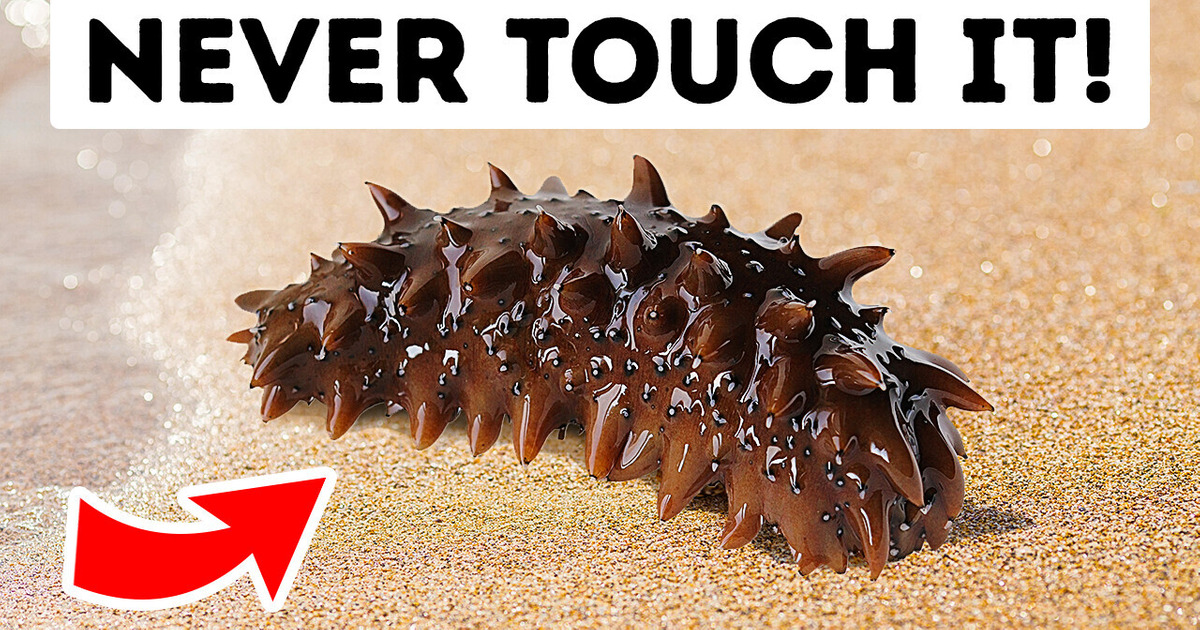12 Stories That Prove Quiet Kindness Is Stronger Than the World Thinks


Sea cucumbers play a vital role in various marine ecosystems, acting as efficient cleaners by sifting through sediment to extract nutrients. Resembling their namesake, sea cucumbers exhibit a cucumber or sausage-like shape, varying in size from less than an inch to over six feet, depending on the species. Not only that, but in Indonesia, Japan and China they hold great value as a culinary delicacy.
These remarkable creatures possess a cluster of tentacles surrounding their mouth, which they employ for filtering sediment. They navigate the ocean floor using tubular feet that extend through their body wall, similarly to starfish. Belonging to the echinoderm family, alongside starfish and sea urchins, sea cucumbers share a similar body structure to cucumbers, but possess small tentacle-like tube feet that serve for both movement and feeding.
As a defensive mechanism, sea cucumbers have the ability to expel their own toxic internal organs towards potential predators, thereby confusing or deterring them. Remarkably, these organs regenerate over time, potentially saving them from becoming prey.
Sea cucumbers inhabit diverse marine environments worldwide, ranging from shallow coastal regions to the depths of the ocean. They reside on the ocean floor, while their larvae exhibit a planktonic lifestyle, drifting with the currents. As scavengers, sea cucumbers sustain themselves by consuming small organisms and particles present in the benthic zone, as well as planktonic organisms suspended in the water column.
Their diet consists of algae, aquatic invertebrates, and organic waste materials. To gather food, sea cucumbers employ their tube feet, which encircle their mouths. Notably, these intriguing creatures are highly regarded by humans, particularly in Asia, where they are relished as culinary delights. In fact, certain sea cucumber species are even cultivated through aquaculture practices to meet the demand for these esteemed delicacies.
When faced with danger, sea cucumbers employ various defense tactics. One strategy involves expelling adhesive threads to trap their enemies, while others resort to self-mutilation. They forcefully contract their muscles, expelling internal organs through their anus. Remarkably, the lost body parts can swiftly regenerate.
Among their arsenal of defenses, sea cucumbers possess Cuvierian tubules, which contain a potent toxin called holothurin. This powerful substance can rapidly debilitate the muscles of their enemies, often effectively deterring them. In a California study, it was observed that the body walls of certain sea cucumber species are toxic. However, despite the toxicity, fish would still consume them, selectively avoiding the poisonous portions.
These toxins not only pose a threat to animals but can also be harmful to humans when encountered in high concentrations. Direct contact with the skin can lead to burning pain, itching, swelling, and reddening of the affected area. If the toxins come into contact with the eyes, they can cause irritation and potentially result in permanent blindness. Swallowing holothurin can lead to muscle cramps, stomach pains, and in severe cases, respiratory paralysis and even death.
As mentioned above, these little creatures can be found even on shallow waters, which means that you might encounter them while having a swim. The only way you might find them outside of the water and on the beach is after a storm.
In this case, don’t be surprised if you see them curled up in a tight ball, since this is a defense mechanism to protect their bodies. In any case, refrain from touching them and instead call the experts to come and check them out.
There are so many dangerous creatures out there that look friendly but are absolutely not or creatures we never ever knew existed. And let’s not forget about all these creatures that can just pop out of our toilet.











